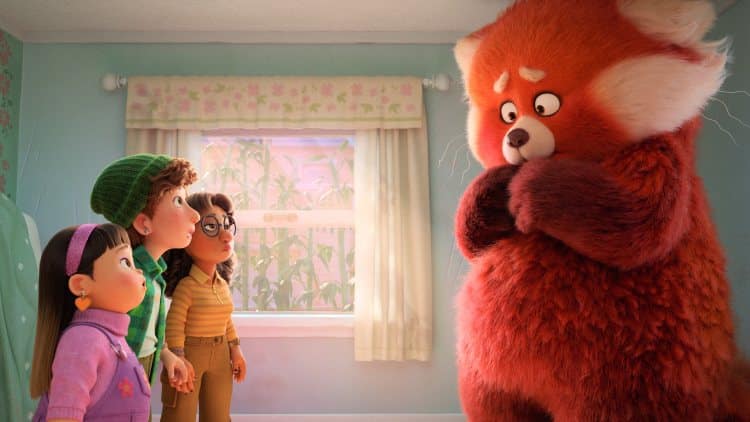Pixar’s Turning Red: A tribute to teenage life
Sun 16 Oct 2022
Pixar’s latest animated film, Turning Red is set in the state of Toronto, Canada during the early 2000s and tells an entertaining story about a young teenager named Meilin Lee.
Meilin Lee, referred to as Mei-Mei is a thirteen-year-old girl from a Chinese-Canadian who strongly believes in student responsibilities and honouring her family.
“COMING-OF-AGE” THEME
The strength of any coming-of-age story is that it resonates with the audience on a personal level; growing up and having personal breakthroughs at a young age is an experience everyone can relate to.
Turning Red handles this theme by focusing on Mei-Mei’s desperation for validation from her family, particularly her loving and overbearing mother while also managing to be her silly, typical young teenage self with her squad of besties, something that her mother isn’t entirely aware of. On multiple occasions, her emotional overwhelm is so strong, they take the form of a big red panda.
CONVENTION OF COLOURS
Another aspect I particularly enjoyed about the movie was the immaculate detail in the visuals and the colouring of the movie; the constant use of a red colour pallet for Mei and the movie overall, in stark contrast to the use of a green colour pallet for her family’s attire. It is important to recall that red and green are on opposite sides to each other on the colour wheel, giving away how different Mei is from the rest of her family.
As a matter of fact, this is not the only character contrast expressed in the movie through colour; for instance, both Miriam (Mei’s best friend) and Ming (Mei’s mother) are seen wearing green throughout the film, showing that they are two individuals that the protagonist holds dear to her heart in spite of how different their personalities are.
SYMBOLISING REALITY
The premise of this film is symbolic of many rarely discussed topics that makes it an icebreaker for discussions regarding puberty, pressure and expectations projected onto children in many Asian families, and struggles endured by women throughout generations.
While Turning Red does not delve too deep into such issues to make it a movie with the heavy subject matter, it manages to do a good job of establishing that they are indeed realistic. Meilin’s desperation for their mother’s validation mixed with her guilt for lying to Ming about her actions is a mentality reflected in many children belonging to Asian households.
The subtle portrayal of such case scenarios not only enhances the quality of the film but also gives a large mass of the audience a sense of comfort in knowing that they are not alone.
In conclusion, while it may not be on par with Pixar’s other noteworthy films, it is most definitely a masterpiece – in fact, it is the first Pixar film to be directed by a woman (Domee Shi) and is a must-watch for anyone who loves stories centred around growing up along with deep, meaningful messages.
This article is contributed by Mariyam Shajil, an aspiring journalist who specializes in writing articles about movies and shows for children from a young adult perspective.
Disclaimer: All views and opinions expressed in The Brew Opinion – our opinion section – are those of the authors and do not necessarily reflect the official policy or position of TheBrewNews.com, the company, or any of its members.

 Apr 19 2024
Apr 19 2024













